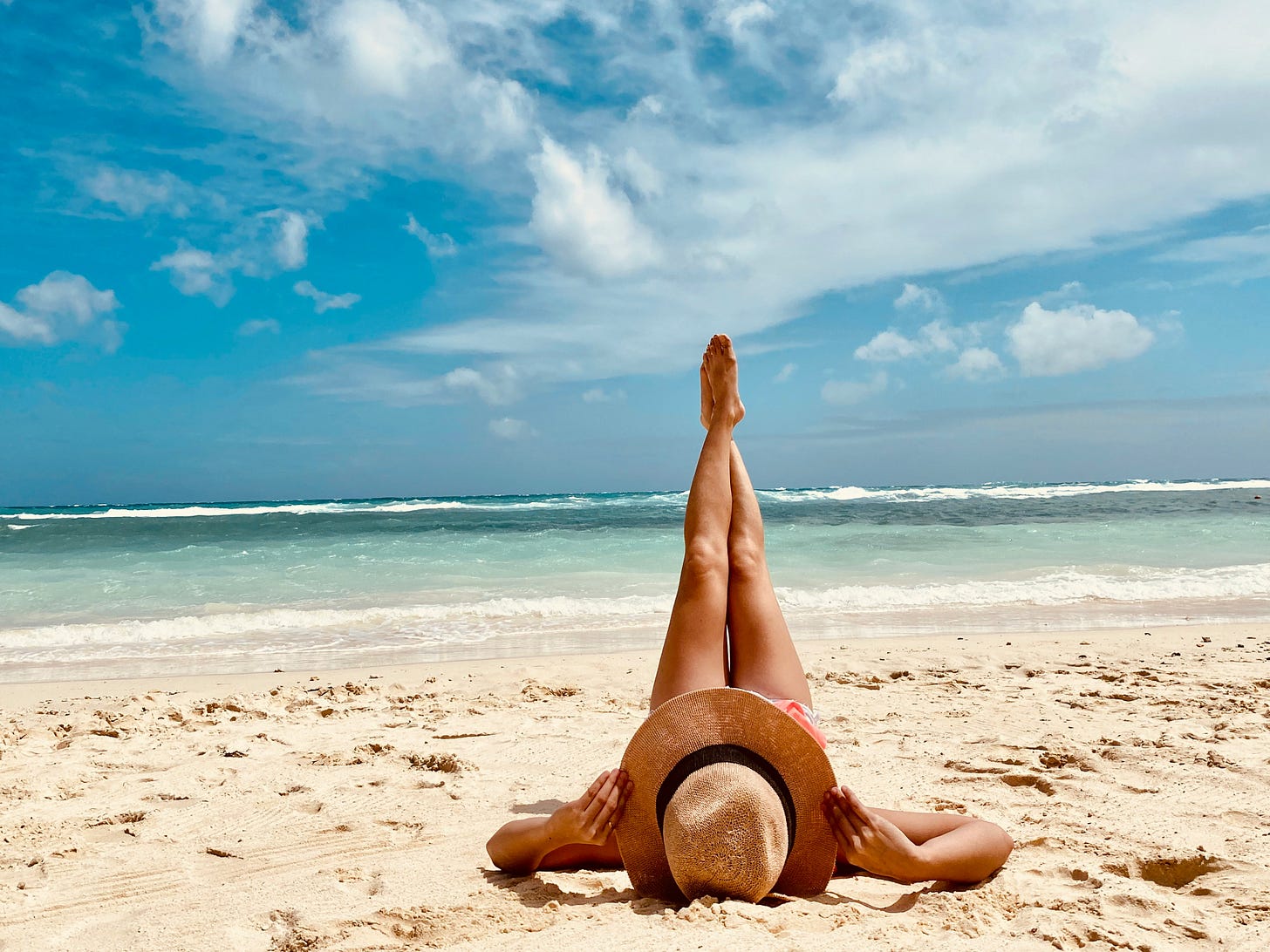Guide to Sunscreen
Chemical sunscreens are hazardous to you, the environment, and the animals they've been product tested on. Here are safer and more effective alternatives.

I’d been in India about three months when a local man commented he’d never seen anyone spend as much time in Mysore as I did without tanning. Part of that was because of how I dressed — long-sleeved, shin-skimming kurtas with ankle-length salwar pants. Most of my skin was covered. I protected my face diligently with a high SPF and topped my head off with a sunhat.
I assumed it was the SPF that kept my face devoid of color. It turns out, the way I applied my sunscreen — once in the morning — was doing me no favors at all after two hours.
And because of its ingredients, it was actually causing more harm than good.
Sunscreens can be laden with toxic chemicals
If I understood the mechanics of my expensive sunscreen with its SPF 70+, I would not have touched it. Chemical sunscreens absorb UV radiation into the skin and convert it into heat that the body then releases into the environment. Merely imagining that process gives me a big case of the icks.
The active ingredients in conventional sunscreens — avobenzone, homosalate, octinoxate, and oxybenzone — undergo chemical reactions when exposed to UV rays. The body absorbs those ingredients, circulating them through the bloodstream. Studies have shown the chemicals remain on the skin and in the blood weeks after use.
Potential health risks of chemical sunscreens include:
Increased risk of cancer. Many of us apply sunscreen to reduce the risk of skin cancer without realizing we’re increasing our risk of breast, lung, and prostate cancer.
Hormone disruption. Chemicals alter estrogen and testosterone levels and have been linked to infertility issues in both men and women. In children, these chemicals can cause early puberty and other developmental problems.
Metabolic disorders. Chemical sunscreens can increase the risk of cardiovascular disease, obesity, and diabetes.
Developmental and neurological problems. The chemicals in sunscreen have been linked to learning disabilities and altered brain function.
Hazardous to the environment. To protect coral reefs and the delicate ocean ecosystems, Hawaii, Key West, Florida, Palau, U.S. Virgin Islands, Aruba, Bonaire, and Mexico have banned sunscreens containing oxybenzone and octinoxate.
Zinc oxide — the safe alternative
The best way to protect yourself from UV rays is to avoid being exposed to them in the first place. Physical sunscreens containing zinc oxide provide that function. Instead of using chemicals to transmute UV rays into something else, zinc oxide forms a physical barrier and blocks the rays from penetrating your skin.
But, there’s a huge drawback. Zinc oxide creates a Casper-the-ghost white glow on your skin.
I have spent years experimenting with zinc oxide products. Most of them are, frankly, disappointing. I either look like I’ve been dipped in liquid chalk or, if they’re tinted, the consistency is that of mud. I mean, they work, but at what cost, and I don’t mean money. They look or feel terrible.
Two summers ago, I found my personal holy grail — Mad Hippie Luminizing Facial SPF ($23). This one works for me because my skin has a yellow undertone, and the MadHippie Luminizing sunscreen is slightly yellow, rather than chalk white. I also quite like Oceanly™ - Phyto-Sun Solid Tinted Oil SPF 30 ($20). The shade is close to my natural skin tone, and it doesn’t feel gross on my skin. Oceanly, made by Canadian consumer products company Attitude, uses plastic-free packaging, which is a huge plus for me.
For legs and arms, I like MadHippie Ultra-Sheer Body SPF 40 ($19), even though the word sheer is used a bit loosely here, and any SPF above 30 is silly. SPF 30 absorbs 97 percent of UV rays; SPF 50 bumps that up a mere 1 percent more.
For brown and other shades of dark skin, I obviously have no personal experience, but I found this article that seems legit. Allure magazine’s associate beauty editor, Annie Blay-Tettey, tested several mineral sunscreens for dark skin. Her top three are:
Quick guide to summer sun protection
Choose natural, mineral-based sunscreen (zinc oxide):
Works immediately, unlike chemical products that require a 20-minute wait
Gentle on sensitive skin
Safer for the environment, especially aquatic life
Reflects harmful UVA and UVB rays
Has no health risks and reduces risk of skin cancer and sunburn
SPF 30 is the sweet spot:
SPF 30 blocks 97% of UVB rays
SPF 50 only blocks 1% more
Higher SPF can give a false sense of security
Reapply every 2 hours, even if you’re:
Not sweating
Not swimming
Just relaxing under a tree
Sunscreen breaks down with sun exposure, so reapplying is key.
If you have a favorite mineral sunscreen, please share!

